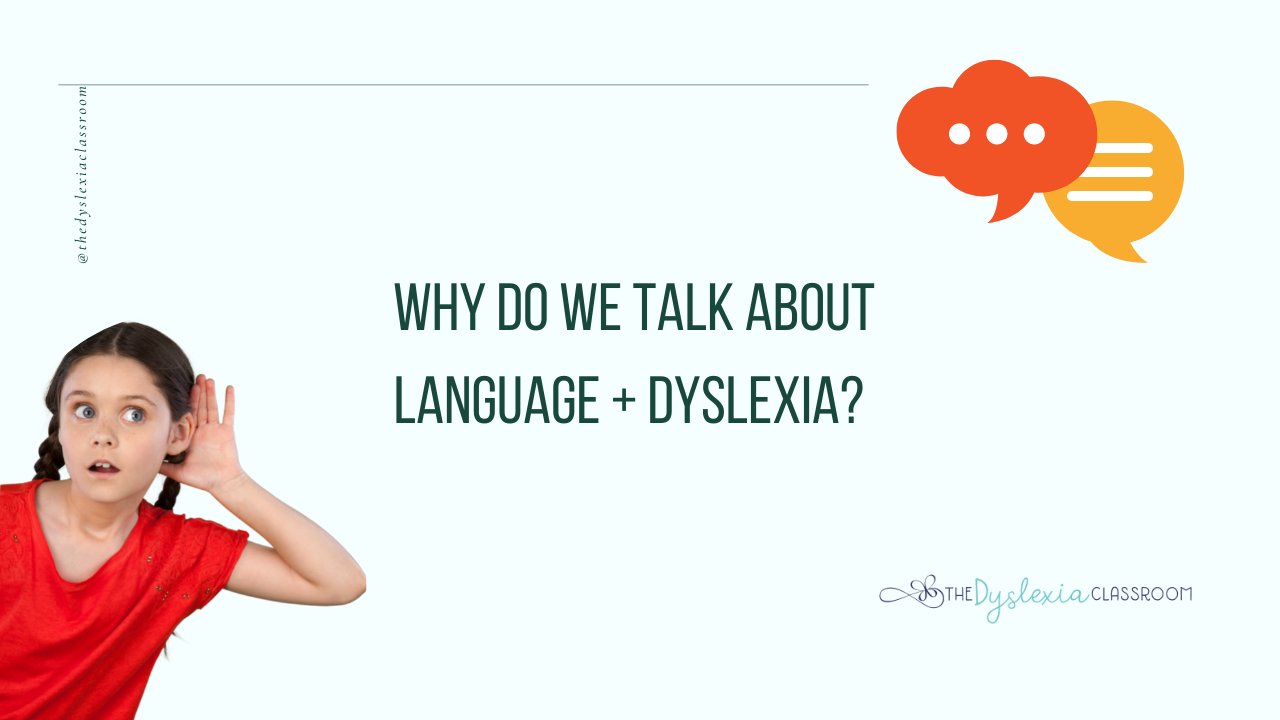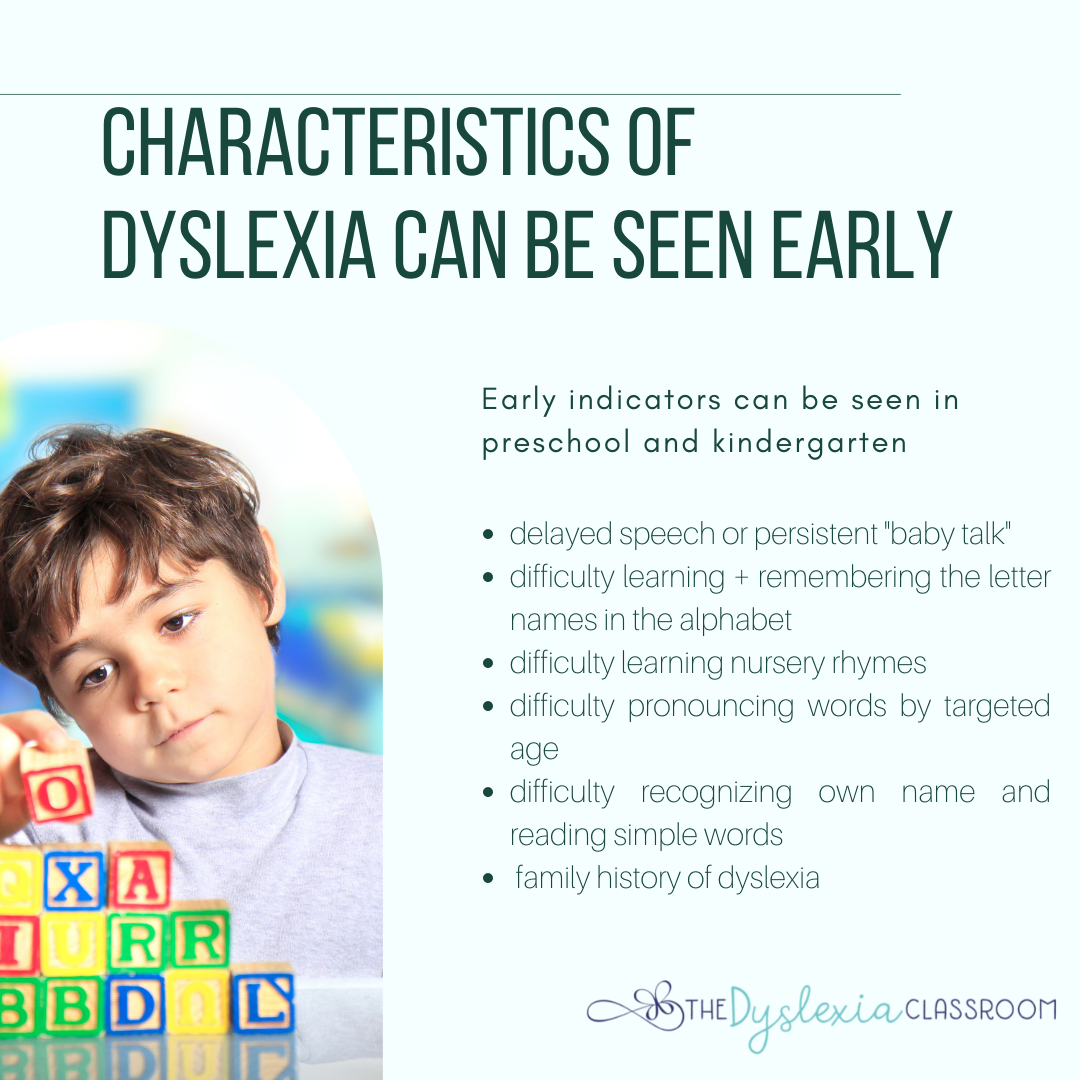Why Do We Talk About Language and Dyslexia?

Academic challenges for those with dyslexia become the forefront of focus in the school-age years. When people speak about dyslexia, the conversation often surrounds reading and spelling, which makes sense as difficulties with accurate and fluent reading are a primary characteristic of dyslexia. In addition to the reading component, we can look at dyslexia through the lens of language. Why?

Dyslexia Is a Language-Based Learning Difference
Dyslexia falls under the Language-Based Learning Disabilities (LBLD) umbrella. What does this mean? Language-based learning disabilities refer to a spectrum of difficulties related to understanding and using spoken and written language. Dyslexia is a cluster of symptoms impacting language skills such as reading, spelling, and writing.

Characteristics of dyslexia can be seen early, and many of the early indicators for dyslexia are rooted in language. For young children in the early ages of school, oral language competence underpins the development of reading skills. Language and early literacy development in preschool and kindergarten set the stage for broader literacy skills. Early reading instruction is rooted in language, and phonological awareness, an area many dyslexic learners find challenging.
The International Dyslexia Association's definition of dyslexia states, "Dyslexia is a specific learning disability that is neurobiological in origin. It is characterized by difficulties with accurate and/or fluent word recognition and by poor spelling and decoding abilities. These difficulties typically result from a deficit in the phonological component of language that is often unexpected in relation to other cognitive abilities and the provision of effective classroom instruction. Secondary consequences may include problems in reading comprehension and reduced reading experience that can impede growth of vocabulary and background knowledge."
The phonological component of language is of primary concern and focus when working with dyslexic learners. Phonological processing includes many aspects of speech and language perception and production (Scarborough & Brady, 2002). This includes speech perception and production, phonological working memory, rapid automatic naming, and phonological and phonemic awareness. For more information on phonological awareness, read the Building Phoneme Awareness article from IDA here.
These phonological deficits can often be seen in preschool and kindergarten. Because children in these early grades have not yet been exposed to formal reading and writing instruction, understanding how language and phonological awareness impact reading instruction is critical as we plan instruction. We must be knowledgeable of how these underpinnings connect to reading instruction and address that area of need. "Specifically, the identification of deficits in phonological processing has helped explain the discrepancy between the ease with which most children acquire spoken language and the difficulty many of these same children have in learning to read" (Brady & Shankweiler, 1991; Goswami & Bryant, 1990; L Y. Liberman & Shankweiler, 1985; Wagner & Torgesen, 1987). As teachers, our knowledge of this connection between language and reading is fundamental to fostering student development. In addition, awareness of early indicators of dyslexia provides parents and educators with the knowledge to monitor and observe a student's progress and growth and provide early, meaningful interventions.
Indicators To Look For
In preschool a student may have some or all of these characteristics:
- Delayed speech or persistent "baby talk."
- Difficulty learning and remembering the letter names in the alphabet
- Difficulty learning nursery rhymes
- Difficulty pronouncing words by targeted age
- Difficulty recognizing own name and letters in name
- Difficulty identifying rhyming words
- Family history of dyslexia
In kindergarten and first grade, a student may have some or all of these characteristics:
- Difficulty with phoneme segmentation tasks
- Limited letter knowledge
- Difficulty with sound-symbol correspondence
- Reading errors (omission, substitution, guessing of words/sounds)
- Difficulty sounding out simple words
- Family history of dyslexia
- History of language delays (see preschool indicators)

How Does Language Impact Dyslexia?
As stated, dyslexia is a cluster of symptoms impacting language skills such as reading, spelling, and writing.
Some skills that can impact students with dyslexia are:
-expressing ideas even though of average or superior intelligence
-recalling the sequence of events or order of letters/numbers
-accurate and/or fluent reading
-spelling
-pronunciation of words (outside of articulation)
-writing
-phonological processing
-rapid verbal-visual responses
-delayed speech and/or persistent "baby talk."
-organizing spoken and written language
When we understand that reading is a linguistic process, we can connect how language impacts our learning. We use spoken language and written language to communicate and learn. Spoken language and written language include speech sounds (phonology), vocabulary (semantics), sentence structure (syntax), paragraphs/topics, discourse, and pragmatics. Although spoken and written language differs in usage, both must be mastered for reading and writing proficiency.

Unique to the learner
Some of our dyslexic learners have strong language skills, and some may not. It is important to note that dyslexia exists on a continuum, and while there are common characteristics, no two dyslexic learners are the same.
Understanding each child's unique learning profile, including oral language development, will help teachers and parents determine specific needs and proper intervention with the structured literacy approach.
Need help teaching sight words?
What if I told you there was an easy way of teaching sight words to help your students move from phonemic awareness to spelling and reading while connecting the science of reading to instructional practices? 🎉The Color-Coding Method to Teaching Sight Words course breaks down the research and provides almost 3 hours of PD and tons of resources to set your students up for success. Click here for more details!

This information is the intellectual property of @2016 The Dyslexia Classroom. Do not use or repurpose without expressed permission from The Dyslexia Classroom. Please give The Dyslexia Classroom an attribution if you use, reference, or quote/paraphrase copyrighted materials. This includes but is not limited to blogs, social media, and resources.
References
https://dyslexiaida.org/definition-of-dyslexia/
Goldfeld, S., Snow, P., Eadie, P., Munro, J., Gold, L., Orsini, F., Connell, J., Stark, H., Watts, A., & Shingles B. (2020). Teacher knowledge of oral language and literacy constructs: Results of a randomized controlled trial evaluating the effectiveness of a professional learning intervention. Scientific Studies of Reading, 25(1), 1-30. https://doi.org/10.1080/10888438.2020.1714629



